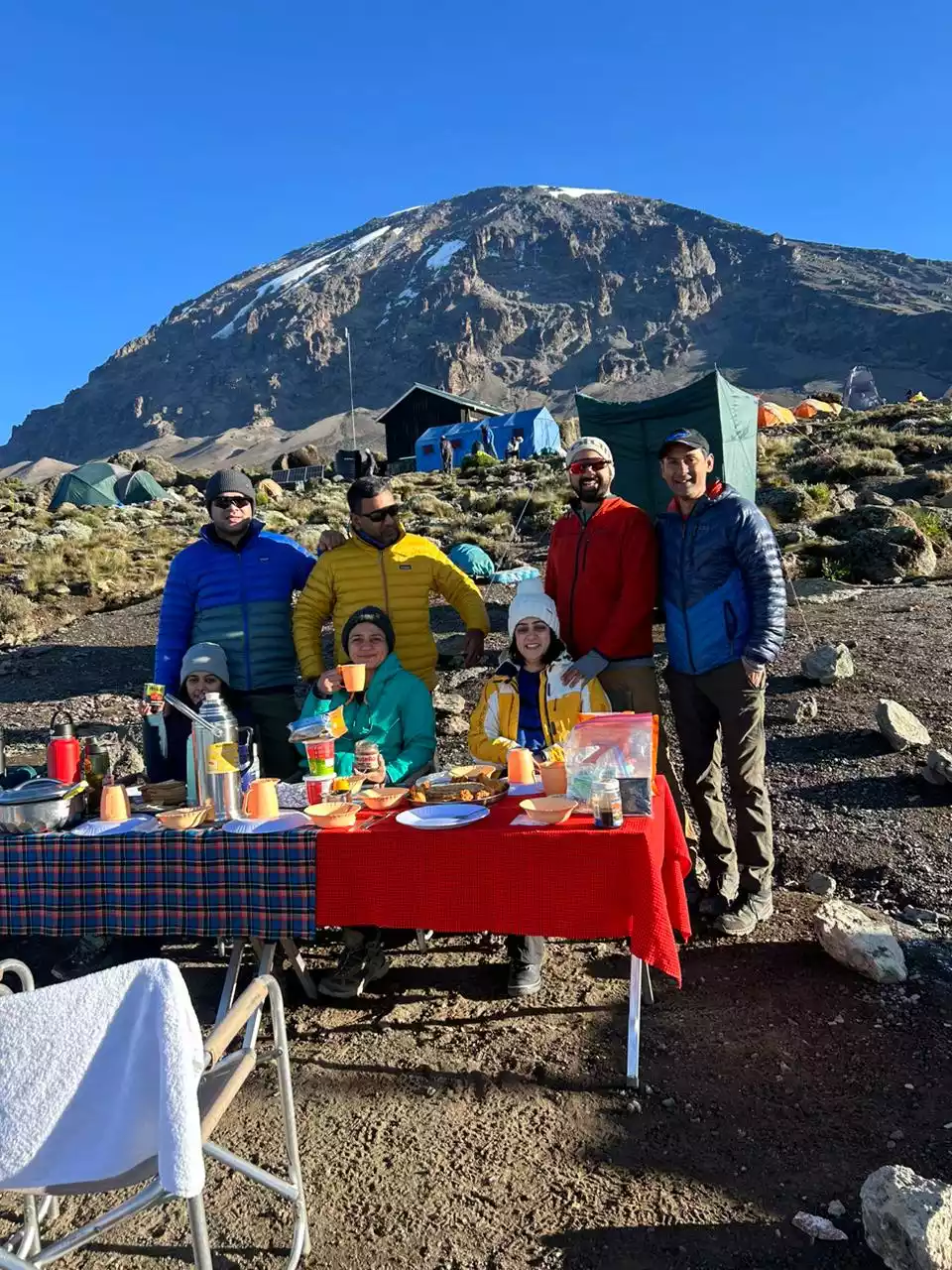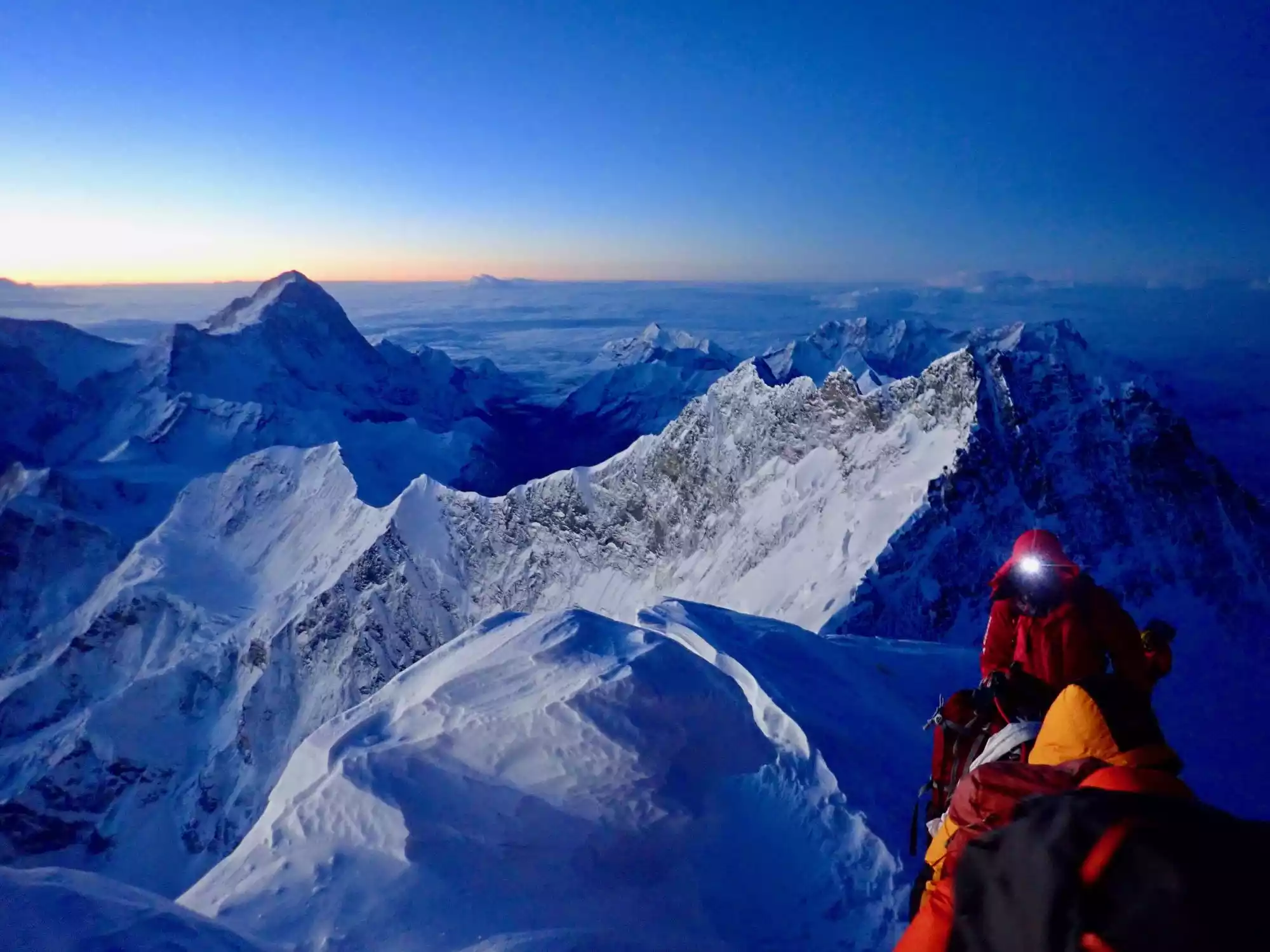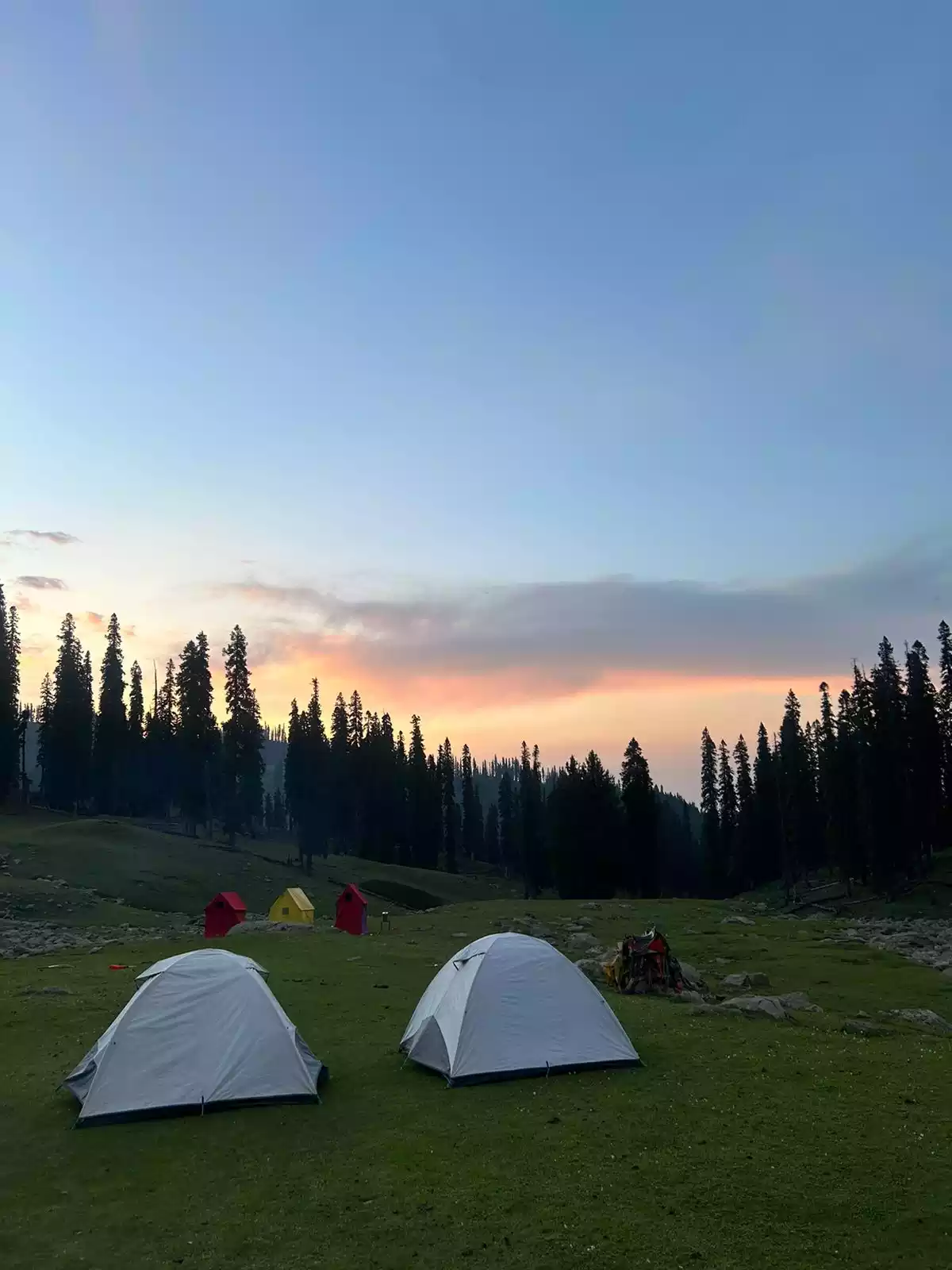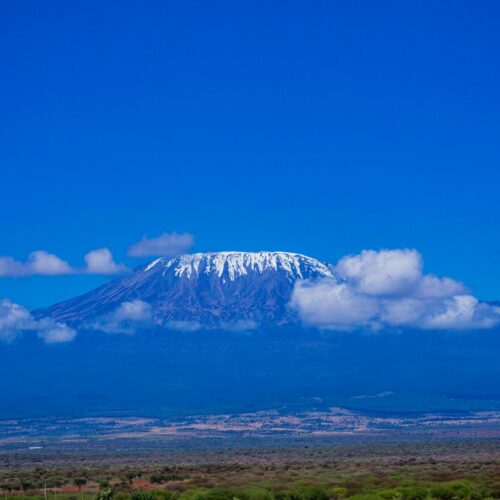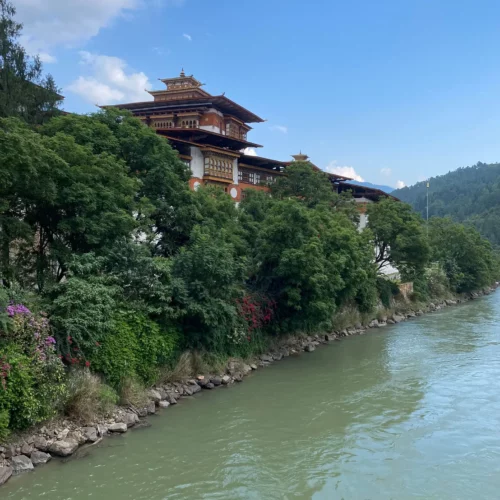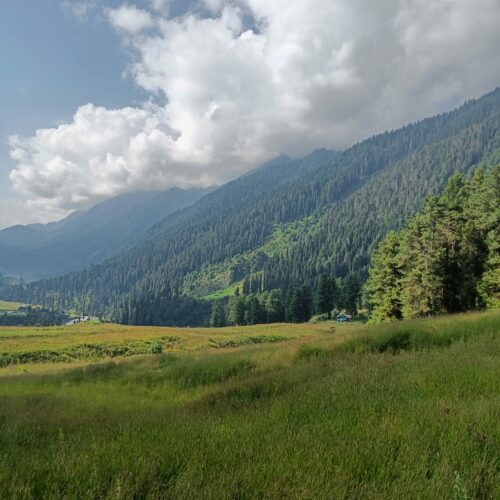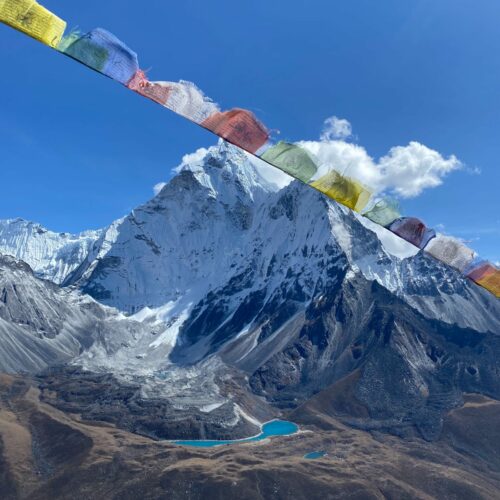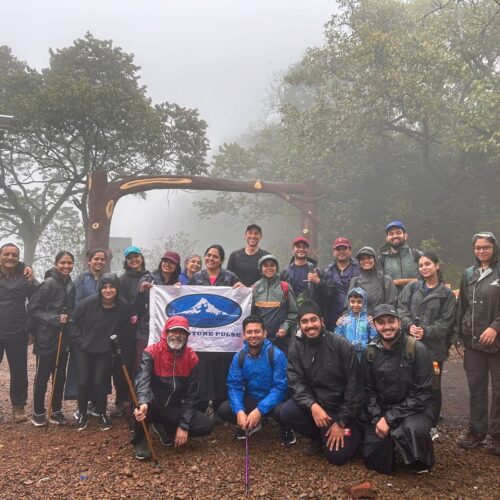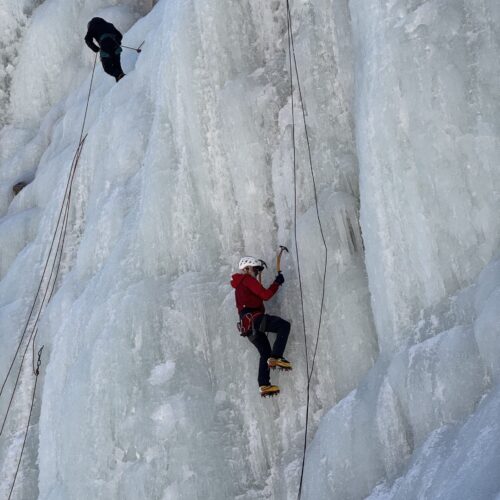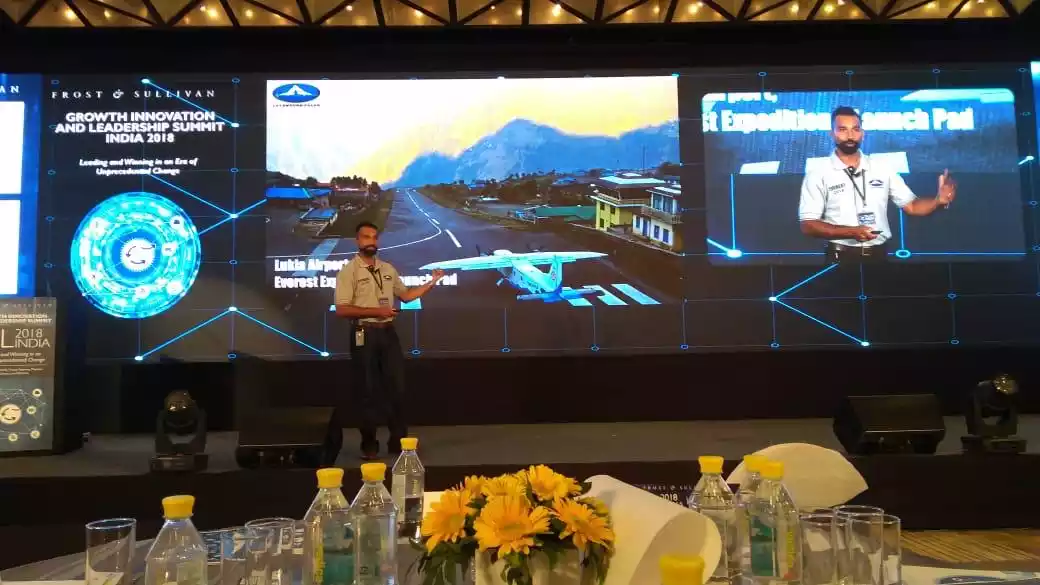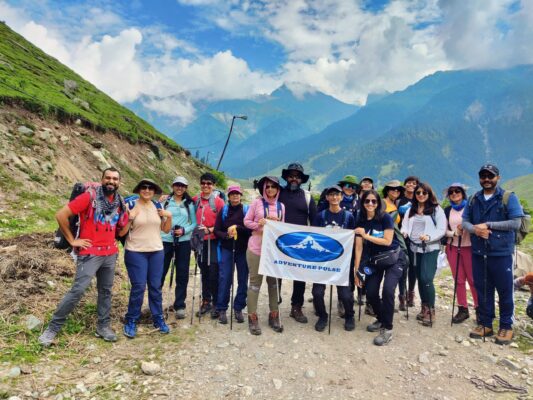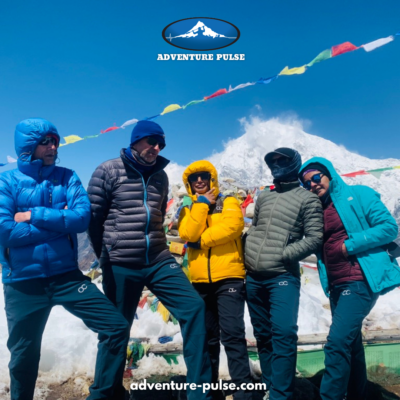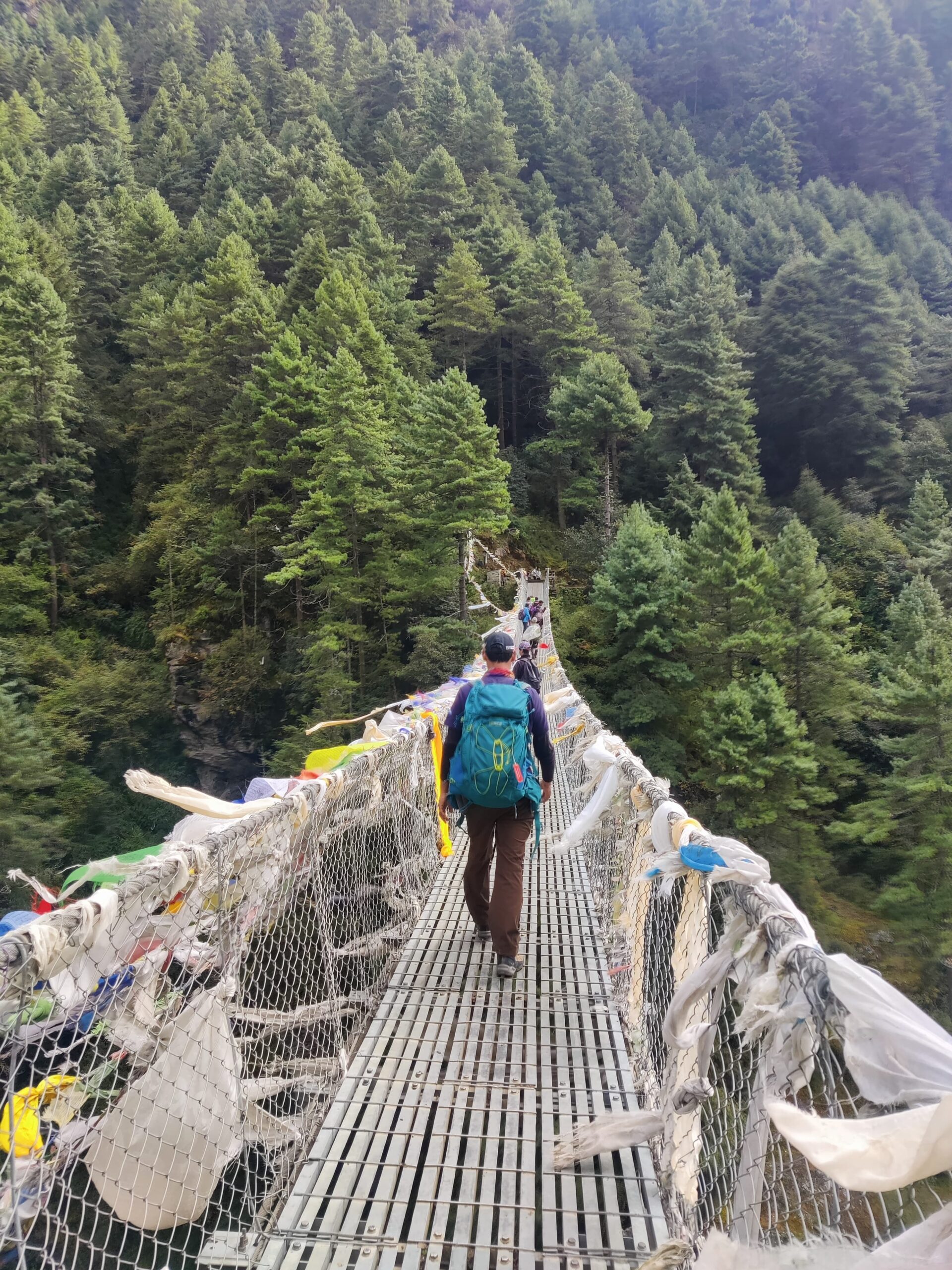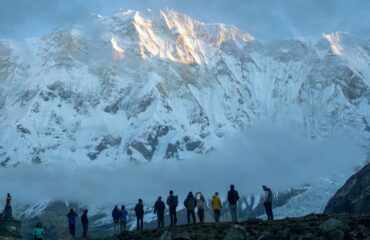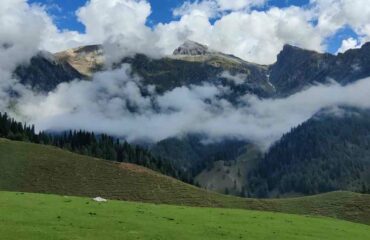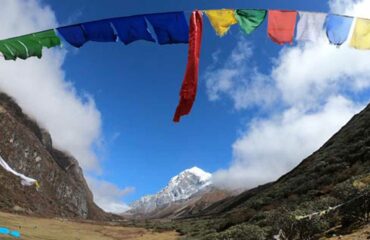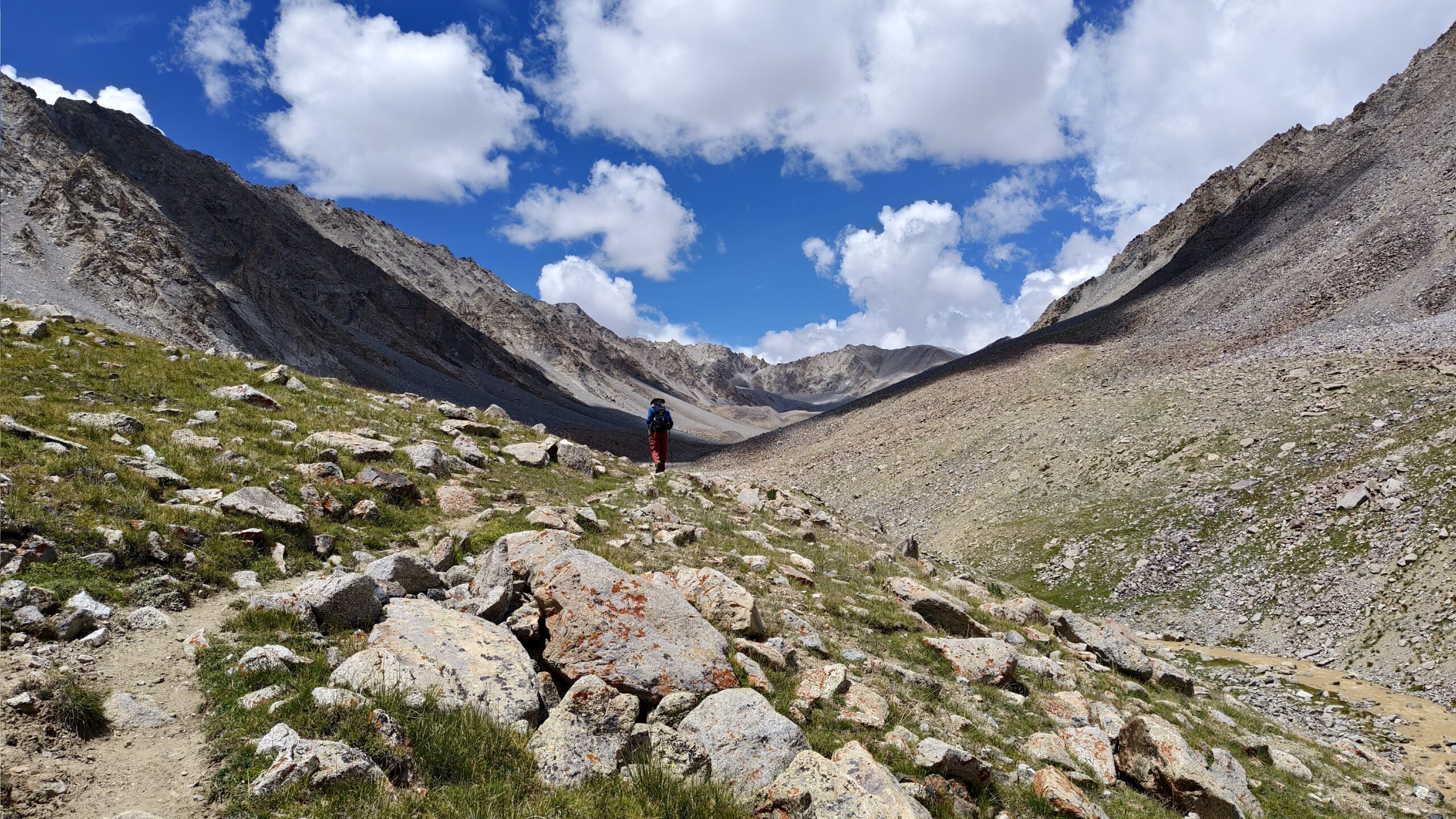
Nestled up in the high mountains of the Ladakh Himalayas lies a trail that a handful of trekkers have experienced over the years. For those who have, often describe it as one of the most quaint and rewarding journeys in the region. The Lasermo La Trek also fondly known as the Nubra Valley Trek, links the Indus Valley near Leh to the remote Nubra Valley, an oasis on the banks of the Skyok & Nubra rivers!
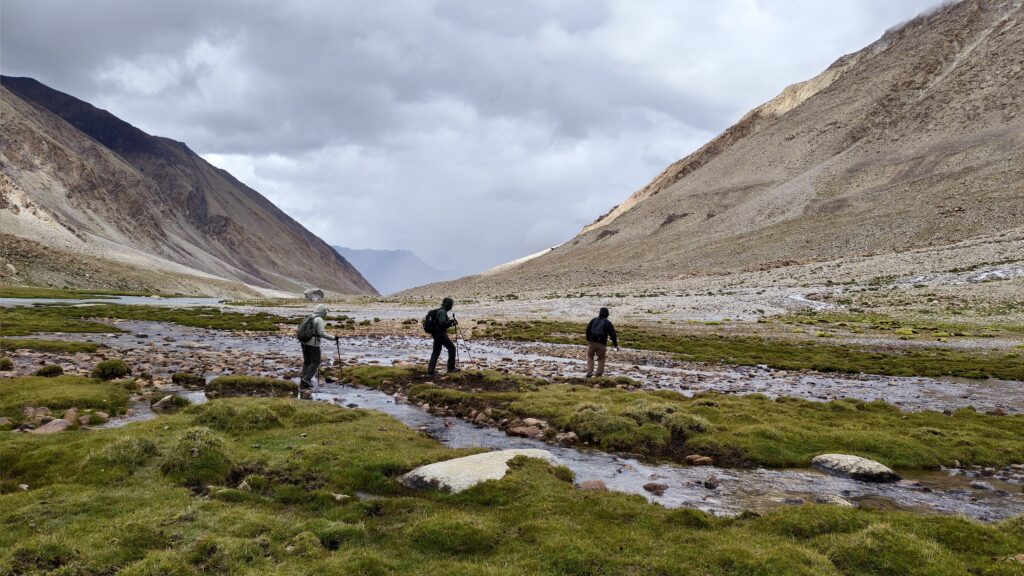
This trek is not solely about a Himalayan pass crossing but allows you to trod a centuries old trade route between two major valleys and a portal between two distinct landscapes. At its heart lies the Lasermo La, an extremely high mountain pass at 5450m.
Yet, what makes this trek truly memorable is not only the altitude but the sheer diversity of experiences it packs into a week: dramatic landscapes, remote campsites, rich cultural encounters, wildlife sightings, and nights under a galaxy-filled sky.
If you are seeking a Ladakh trek that goes beyond the ordinary, here are 7 reasons why the Lasermo La Trek should be on your adventure bucket list.
-
One of India’s Highest Pass Crossings at 5450 m
The most common reason trekkers choose the Lasermo La Trek is of course, its formidable pass crossing. Standing at 5450 m, Lasermo La is one of India’s highest mountain passes which are crossable on foot. It’s stands higher than several other better known passes like Pin Parvati (5319 m), Kongmaru La (5260m), Bali Pass (4950m), Pin Bhaba Pass (4890m) and Rupin Pass (4650 m) to simply name a few. Attempting it is no small feat.
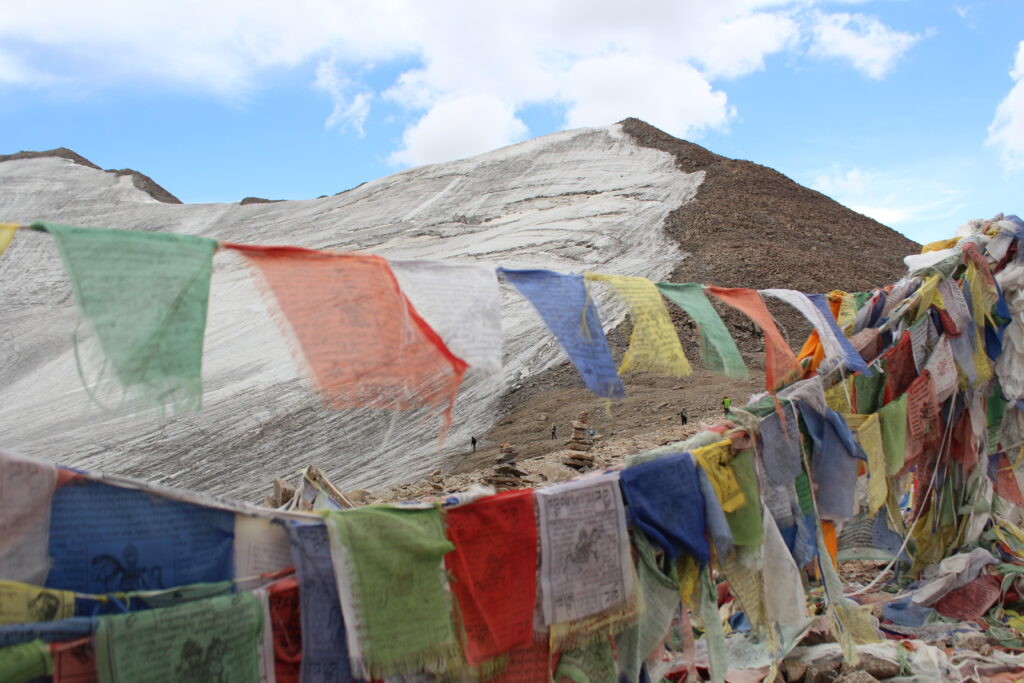
The pass can be tackled from either the Southern or Northern Base Camps at 4950m and 4850m respectively. The air feels razor thin, and every step is a stark reminder of the terrain you are traversing. The mental and physical challenge cannot be overstated and the reward is a truly a transformative and spiritual experience!
From the south side, where we attempt this climb, the route has a relatively steeper ascent involving several switchbacks through a few moraine sections, slopes of scree and large boulder fields.
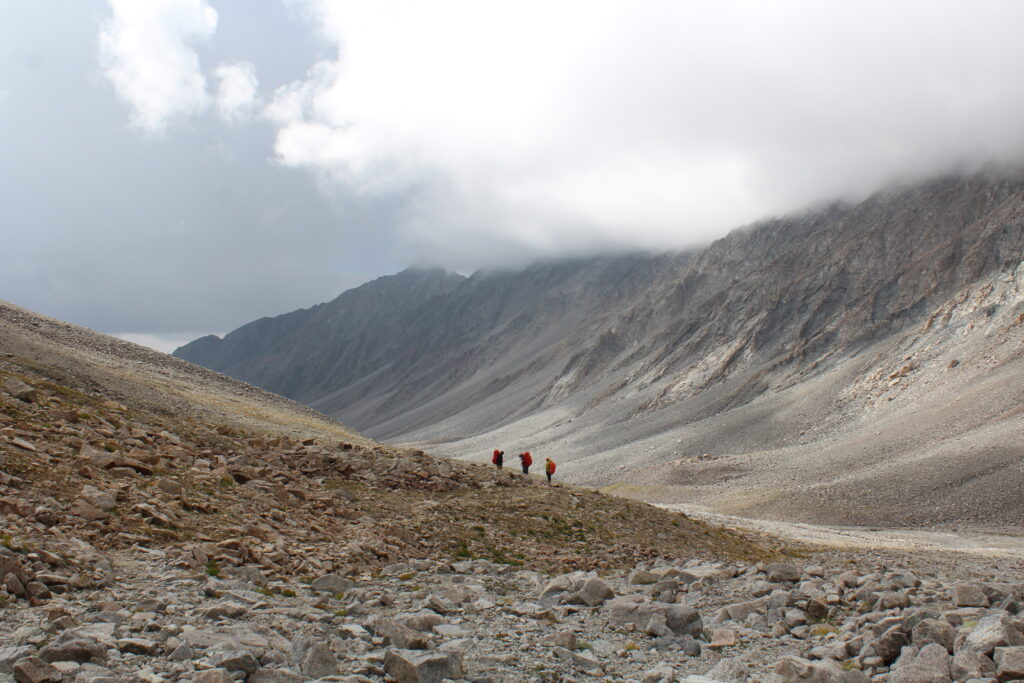
In contrast, the approach from the northern side has a more gradual ascent but is much longer and one that involves negotiating a dangerous terminal moraine and a glacial slope covered in ice and snow with a few visible crevasses en-route. Additionally, the following descent from the south side becomes extremely steep and hard on the knees after a tiring climb to the pass.
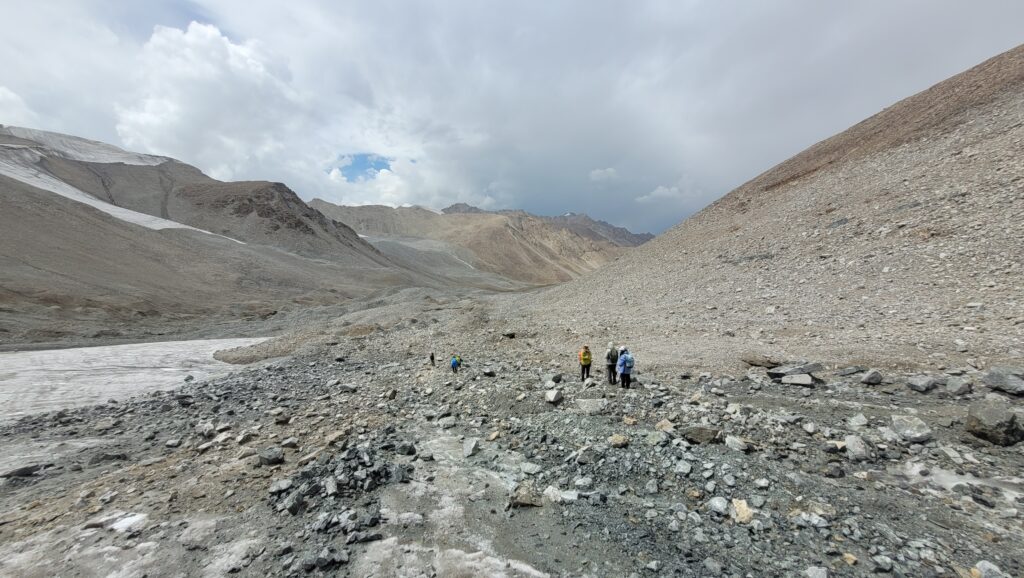
From the top, the panoramic views extend across the Ladakh range to the south and the towering Karakoram peaks to the north. One either side lie massive glaciers that make you feel tiny in comparison and the sheer scale and enormity of the landscape hits home. On a clear day, you may even catch glimpses of snowy giants that border the Siachen region.
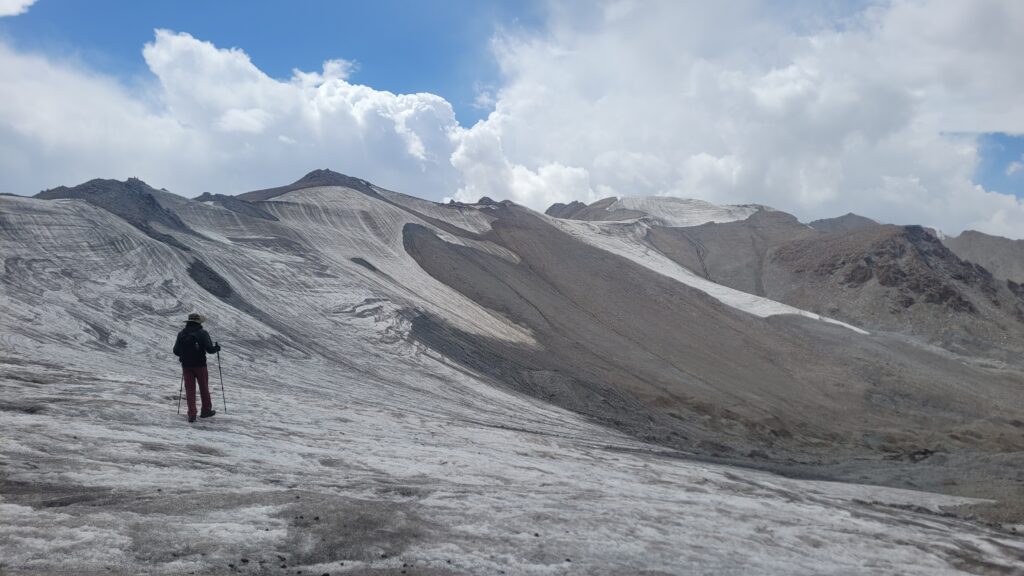
What makes Lasermo La special is its raw, unfiltered, high-altitude character. There are no tea houses or fixed camps along the way. The pass demands respect and preparation, and when you finally stand on its crest, lungs heaving in the thin air, it feels like a genuine achievement and one that feels truly earned.
-
Two of the Most Unique Campsites in Ladakh
Trekking is one of those activities that truly embodies the spirit of “it’s not the destination but the journey.” The trails we walk are not only remembered for the summits and high passes but the countless corners of the mountains that we call home and pitch our tents. The route to Lasermo La is blessed with two of the most unique and scenic campsites, not only in Ladakh but across the Himalayas.
Sumzom (4600 m)
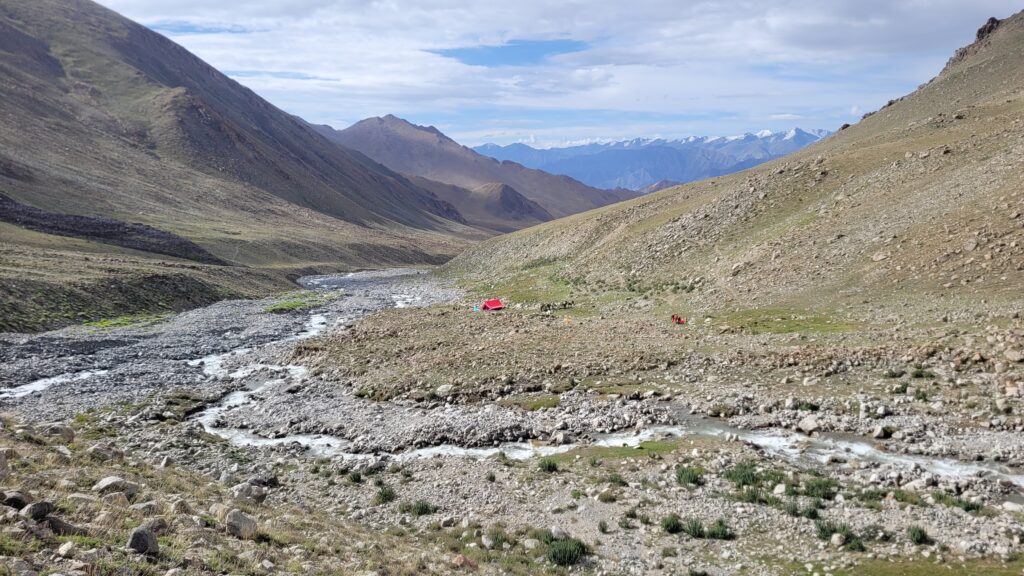
Sumzom, on the Phyang side is a rare geographical wonder. With barely enough space to pitch 5 tents, it’s a truly wild location that sits at the intersection of three valleys, streams from each cutting their way down from a different direction. The feeling of camping here is of being at the crossroads of the mountains, with ridgelines and peaks stretching into the distance.
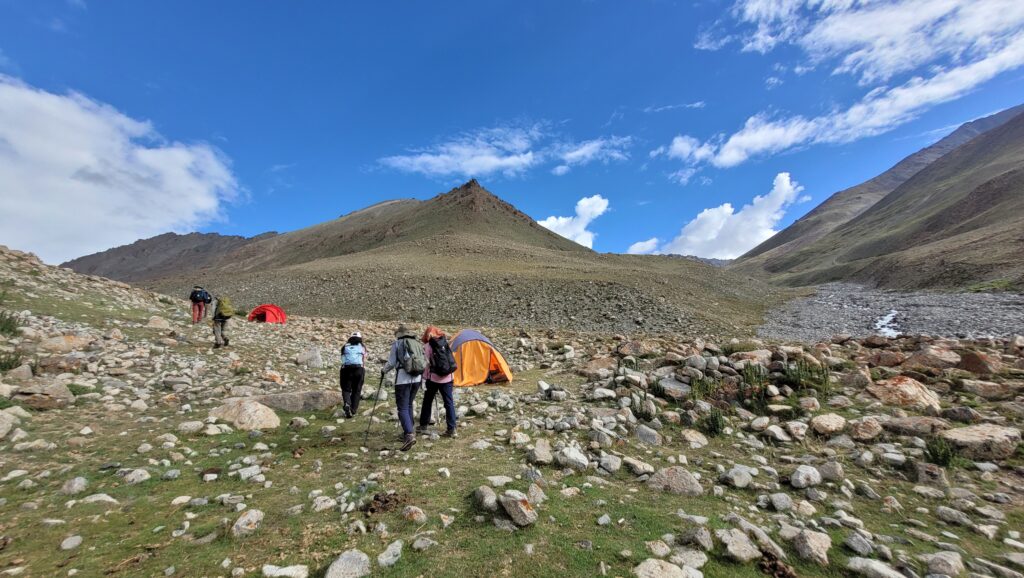
The pastures surrounding Sumzom are frequented by yak herders in summer, and a simple swivel around will also have you catching glimpses of little furry Marmots dashing out of their burrows!
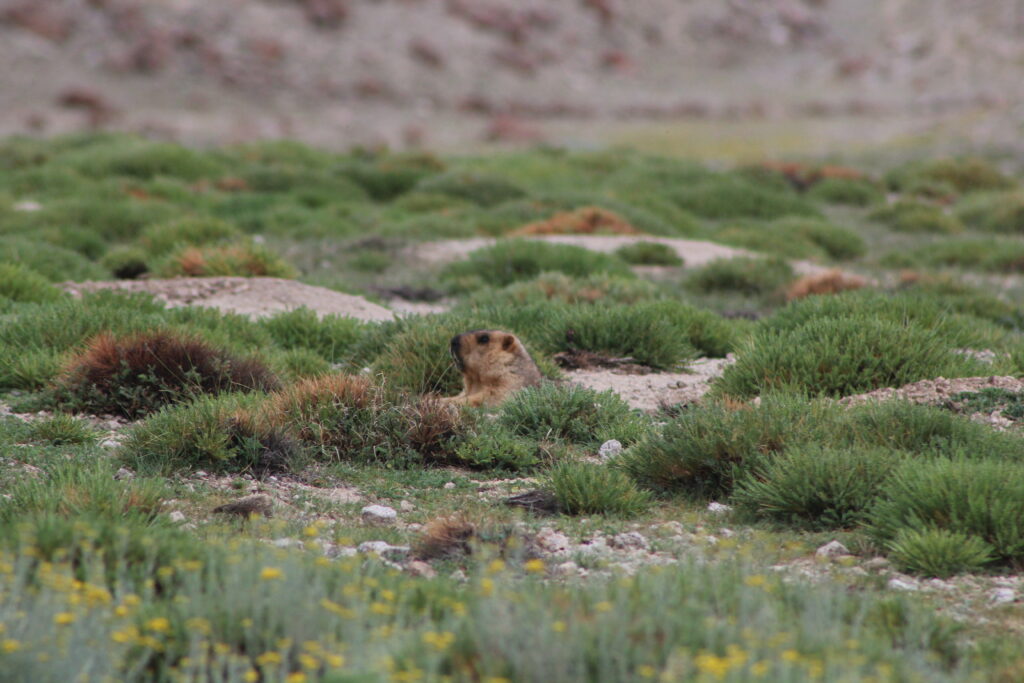
Evenings at Sumzon are some of the most peaceful experiences you can have with the setting sun lighting up the twilight hours in the direction of Lasermo La while the Stok Range is bathed in alpenglow. As this vista unfolds you’re perched right at the banks of the Phyang Nala as the water gushes by.
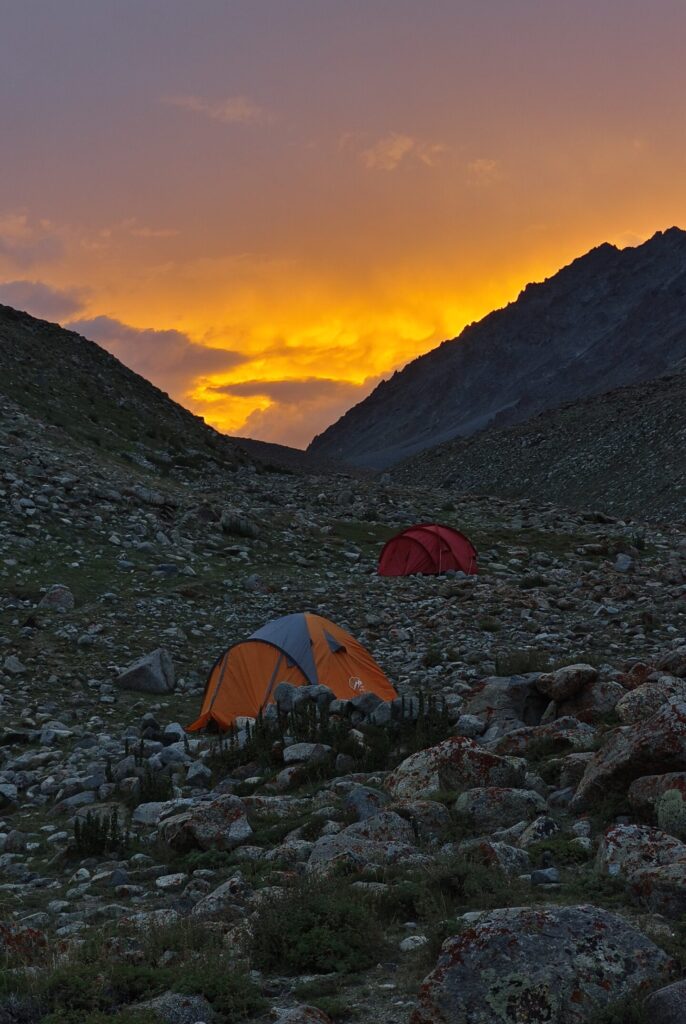
Hunder Dok (4400m)
Meanwhile on the Nubra side of the pass, the final pitstop of the trek, Hunder Dok (4400m) offers a vivid contrast. After days of barren high-altitude desert and glaciated trails, your last campsite is greener, dotted with teal blue streams, vast grazing grounds and wildlife galore.
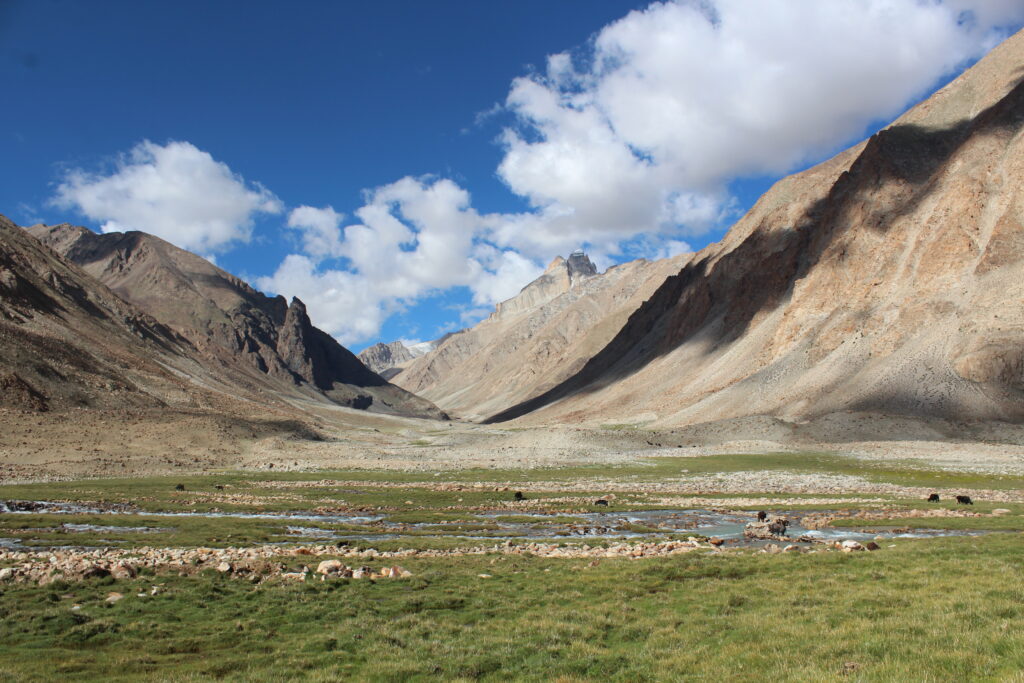
As you walk around the camp, it truly feels like you’ve entered Shangri-La, as colorful prayer flags flutter in the distance against the backdrop of unnamed pinnacles and peaks. An oasis tucked away in the folds of the mountains.
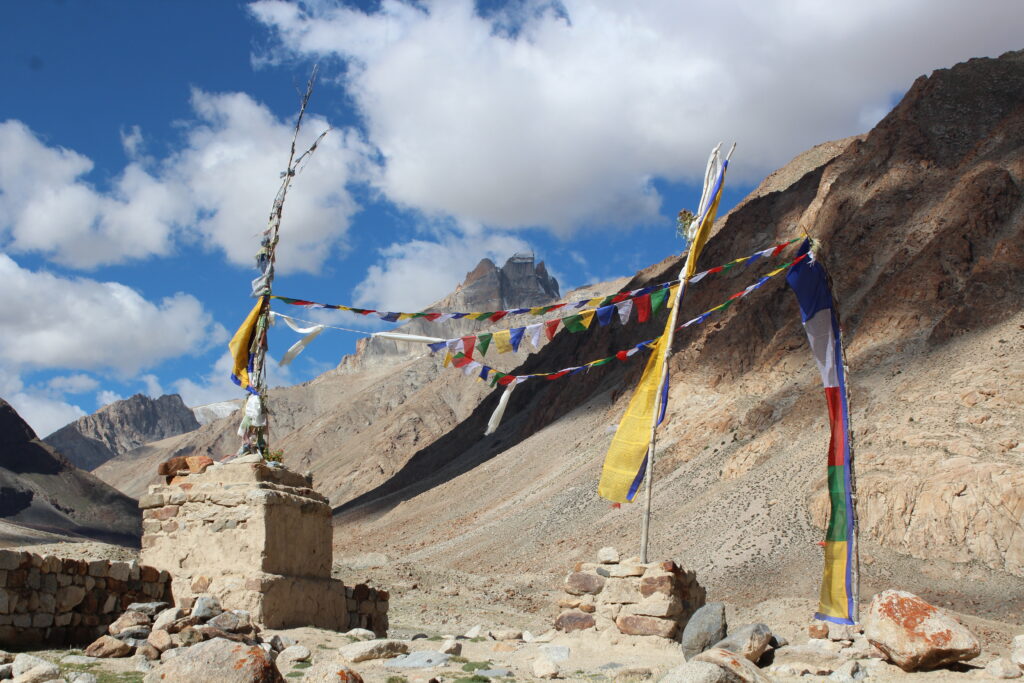
A few hours below lie cultivated farmlands at the actual village of Hunder Dok, which is a typically remote and picturesque Ladakhi hamlet with stone houses that almost blend into the mountainside only distinguished by the crops of barley and buckwheat growing in the farmland all around.
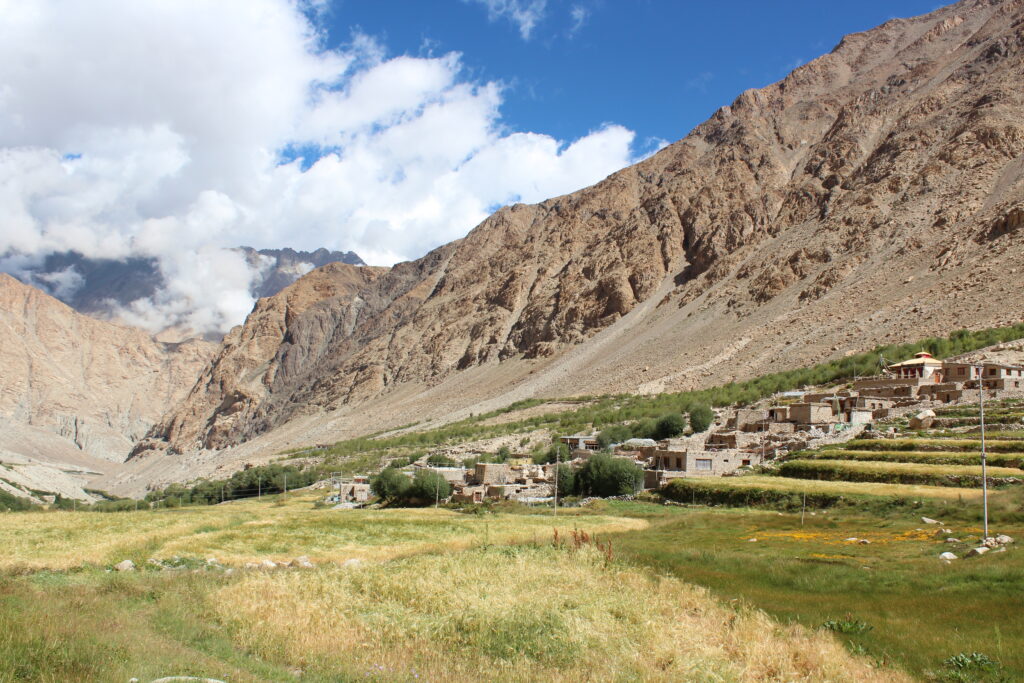
Together, these two campsites showcase the transition between landscapes that defines the trek. From stark wilderness to fertile valleys. Few treks in Ladakh offer such an extreme diversity of camping experiences within a span of just few days.
-
Cultural Immersion: Monasteries and Valleys along the Trail to Lasermo La
One of the underappreciated aspects of the Lasermo La Trek is the cultural immersion it offers. Ladakh is famous across the world not just for its mountains but for its rich Buddhist heritage, traditional village architecture, and ways of life adapted to the weather of a cold high-altitude desert.
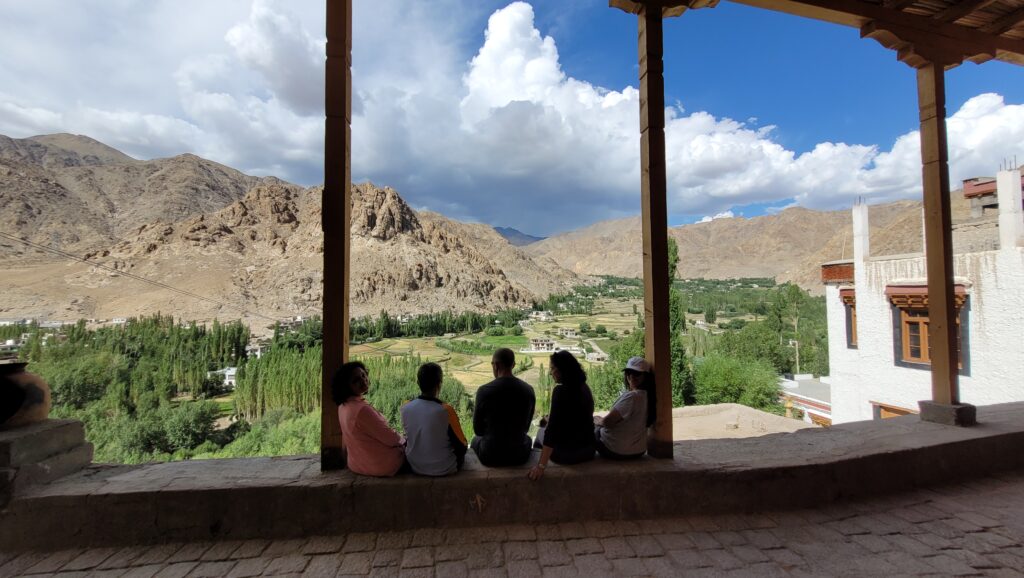
The journey begins near Phyang Monastery, one of the oldest monastic complexes in Ladakh, dating back to the 16th century. Visiting Phyang before setting off gives you a sense of Ladakh’s spiritual rhythm, as you turn Mani wheels, stroll through quiet passageways that connect the Gompa and fresco-lined halls echoing with chants from the 100 monks that it houses.
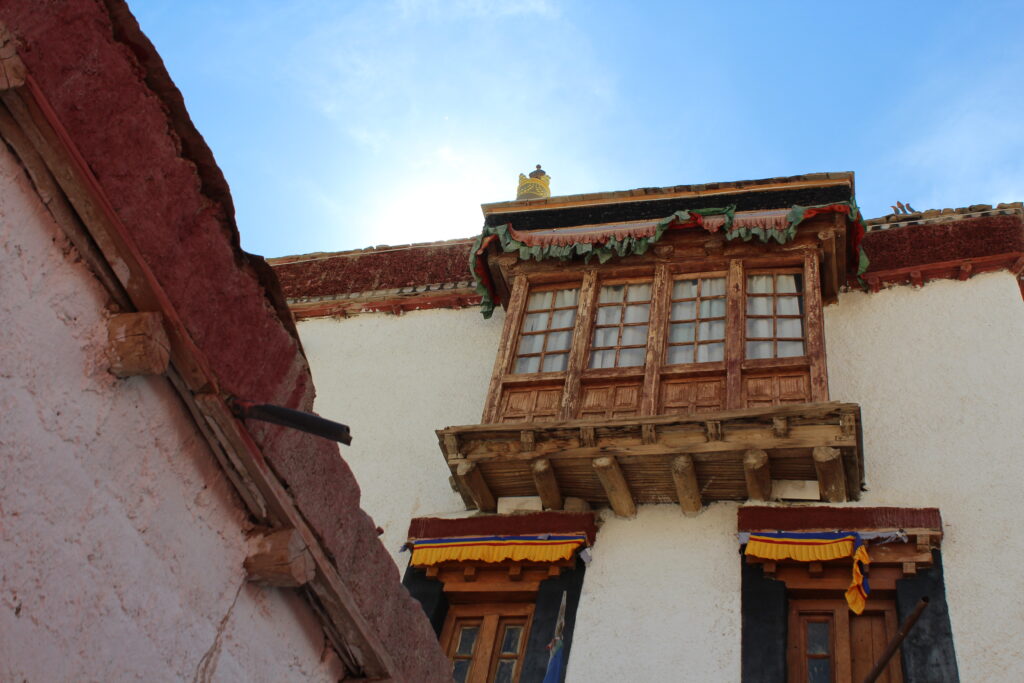
On the Nubra side, after crossing the pass and essentially ending the trek, the cultural experience continues at Diskit Monastery, the largest and oldest gompa in Nubra, found in the 14th century. Its towering Maitreya Buddha statue looks out over the Shyok Valley, and the monastery itself has a commanding view of the sweeping sands and rugged mountains below.
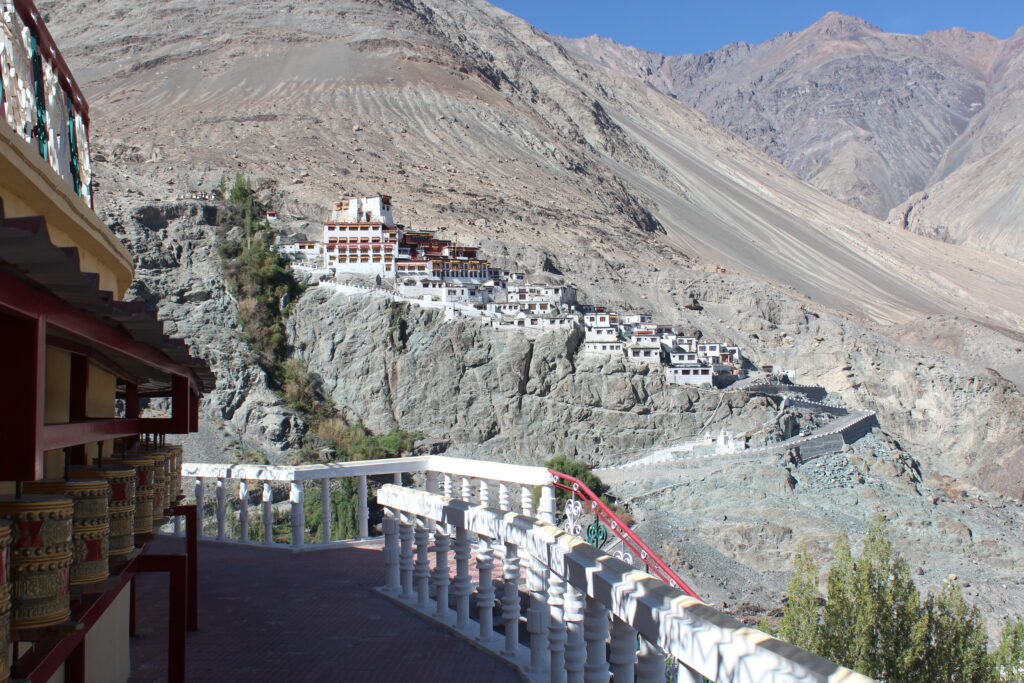
But culture on this trek is not limited to these grand monasteries. Along the way, you encounter the daily life of Ladakhis in its most authentic form. You might cross paths with herders guiding their yaks and dzos across summer pastures, or pause to watch villagers tending to ripening fields of barley.
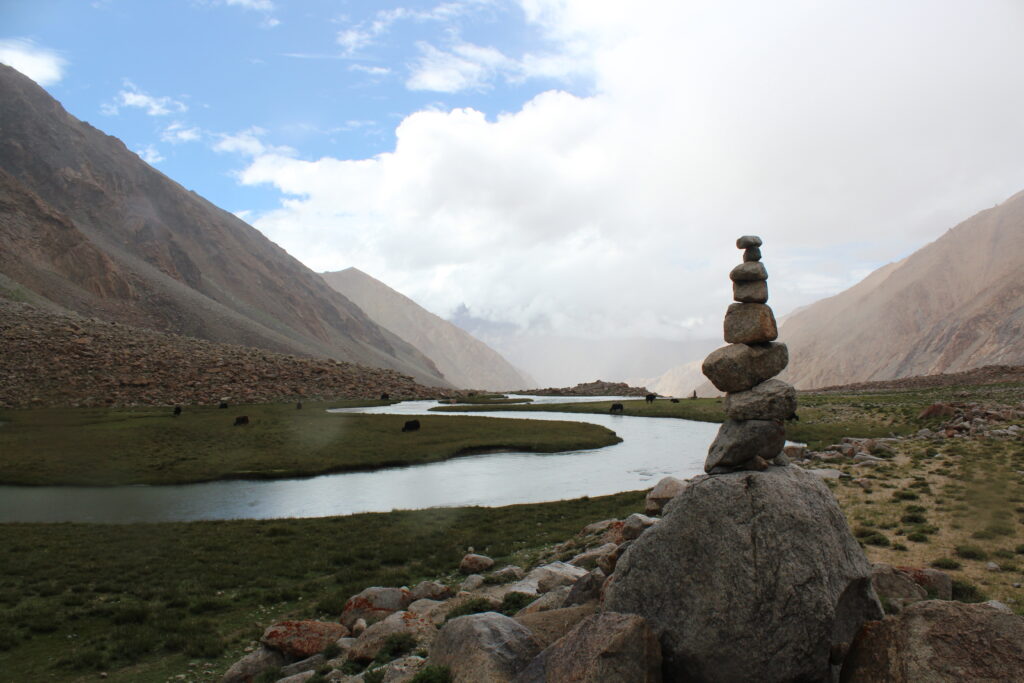
In hamlets tucked against mountain slopes, you see whitewashed homes, apricot trees shading courtyards, and irrigation channels carrying glacial meltwater to small but fertile plots.
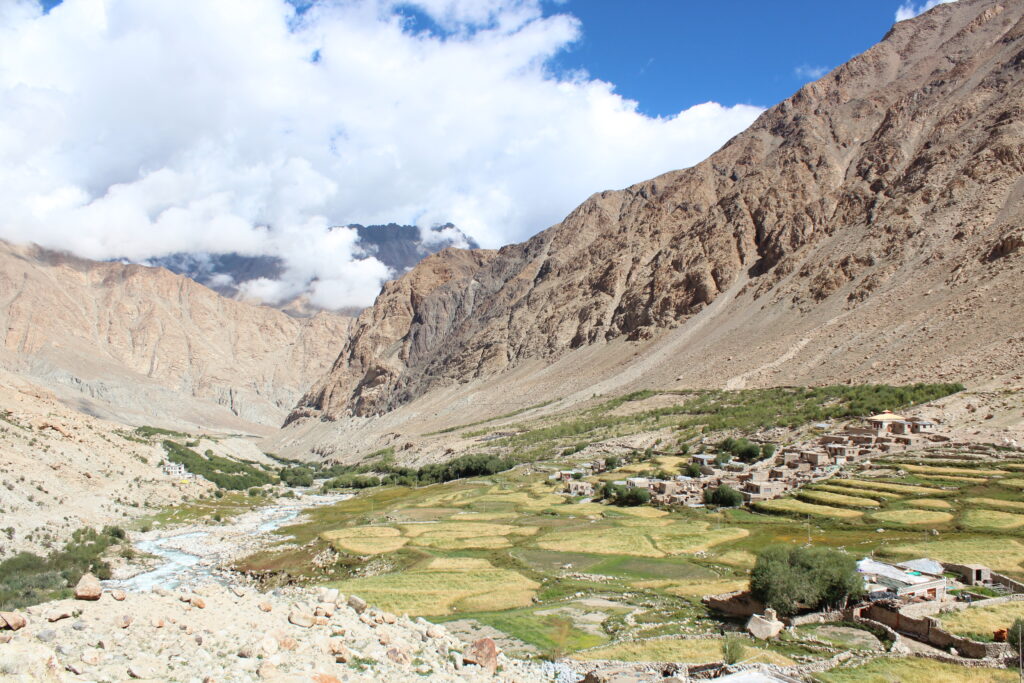
These glimpses into everyday routines, observing how communities sustain themselves in such harsh yet beautiful surroundings, transform a simple trek into a walk through living history, where the landscape and the culture are inseparable.
-
A Kaleidoscope of Landscapes on Either Side of Lasermo La
If variety is the spice of trekking, then the Lasermo La trek delivers in abundance. Unlike other trails in Ladakh where the landscape of a certain valley encompasses a consistent range of vistas, colours and geographical features, this route is a constant showcase of new and exciting terrain.
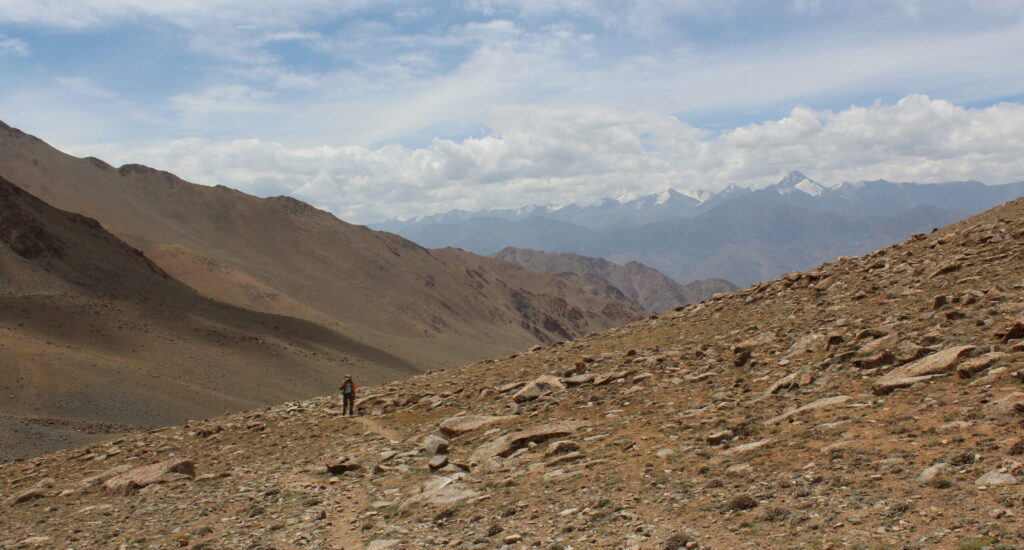
On the Phyang side, you begin with riverbed campsites and arid mountain slopes that resemble lunar landscapes. As you climb higher, the trail threads its way over boulder fields, moraine, and glacial terrain, testing balance and patience. Crossing the pass itself can involve crunching over snowfields or skirting icy patches, depending on the season.
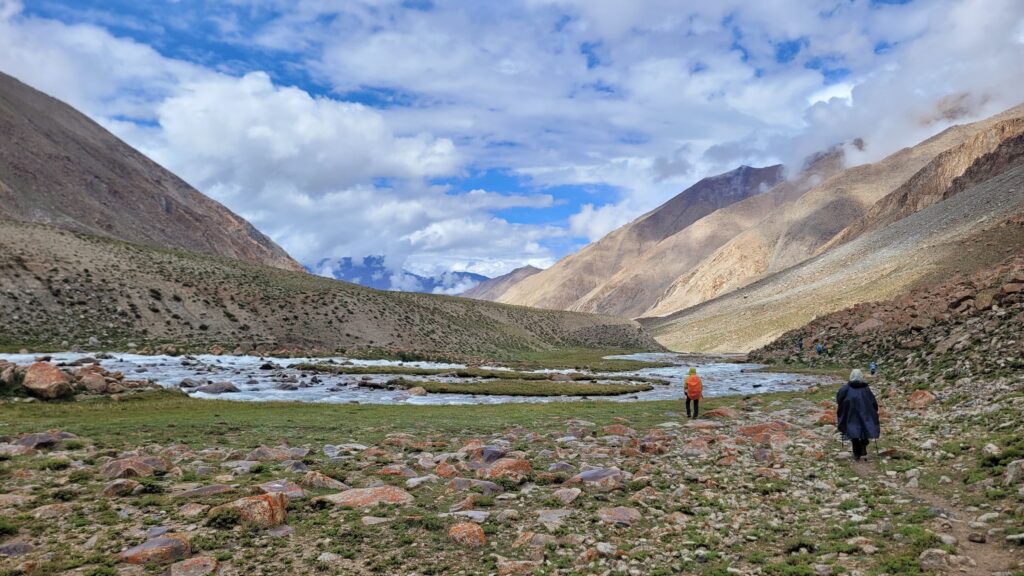
Descending into Nubra is like entering a different world. The trail passes by glacial pools, alpine lakes, and lush grazing grounds, dotted with wildflowers in summer. The meadows feel endless, and streams wind their way across the valley floor. By the time you reach Hunder Dok, the terrain transforms again into a more hospitable, almost pastoral setting.
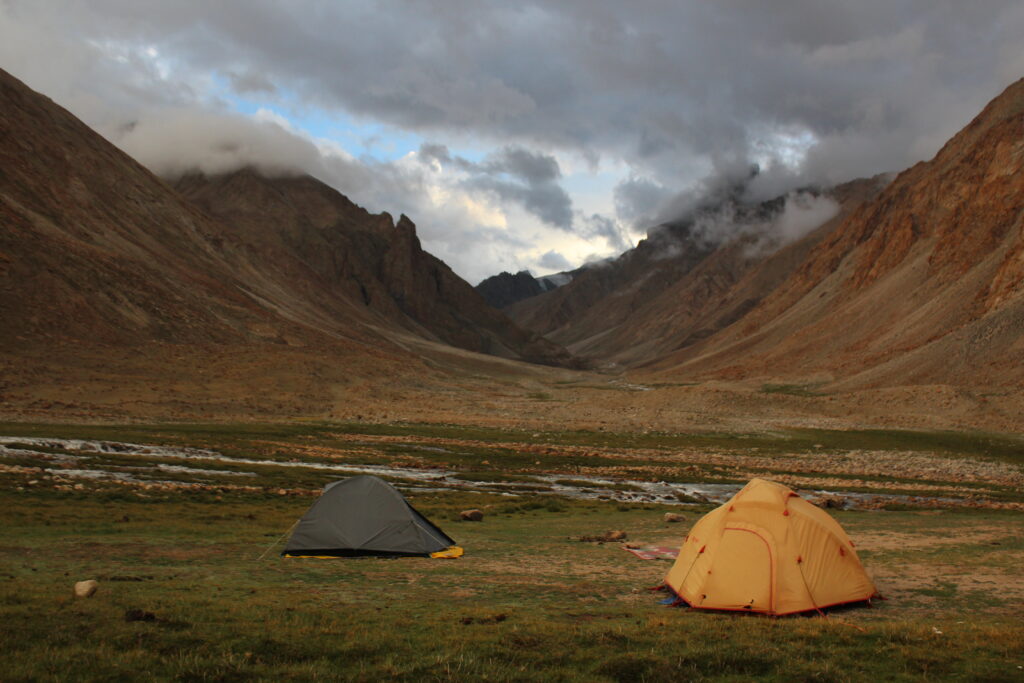
This constant shift keeps every day interesting and adds to the trek’s technical and visual richness. You’re not just repeating one type of climb or descent; you’re experiencing Ladakh’s geological diversity first-hand.
-
The Silence of the Trail – Off the Beaten Path on an Ancient Trade Route!
After a concrete road via famous Khardung La connected the Indus & Nubra valleys in the 1970s, the Lasermo La, which was a well-trodden trade route between villages on either side, slowly faded from memory.
And perhaps the most underrated and in our opinion the most alluring draw of the Lasermo La Trek is its presently offbeat nature. While popular trails like Markha Valley or the Sham Valley trek see hundreds of trekkers each year, the route to Lasermo La, from either side, remains largely untouched.
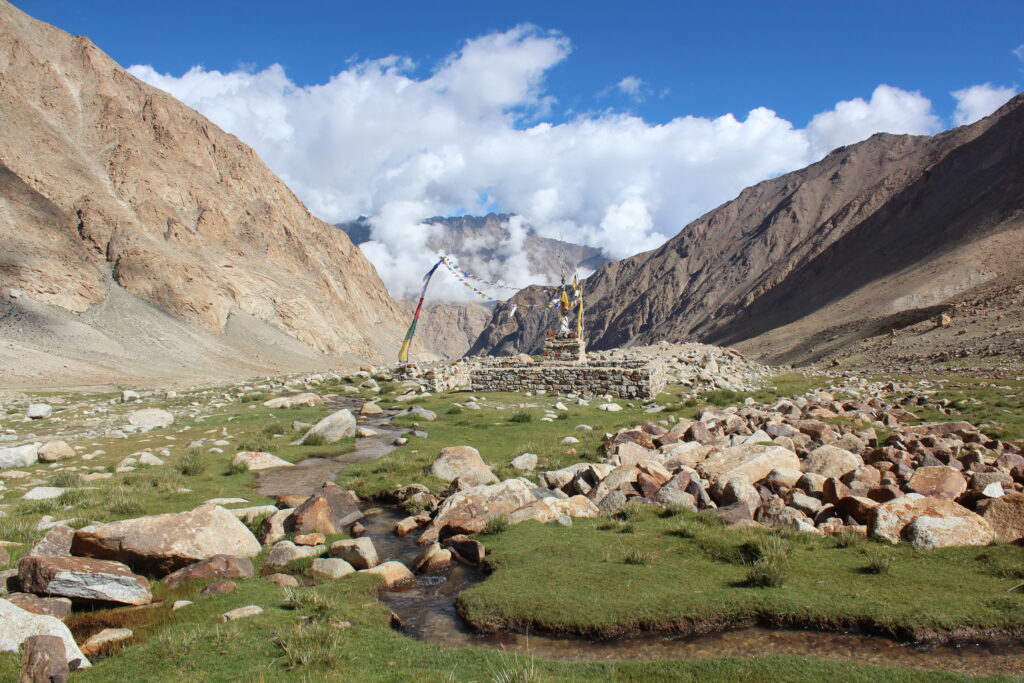
You’re unlikely to encounter more than a handful of fellow trekkers, if any. The trail feels pristine, with no tea-house infrastructure, no commercial camps, and no crowds, giving you the increasingly rare experience of solitude in the mountains.
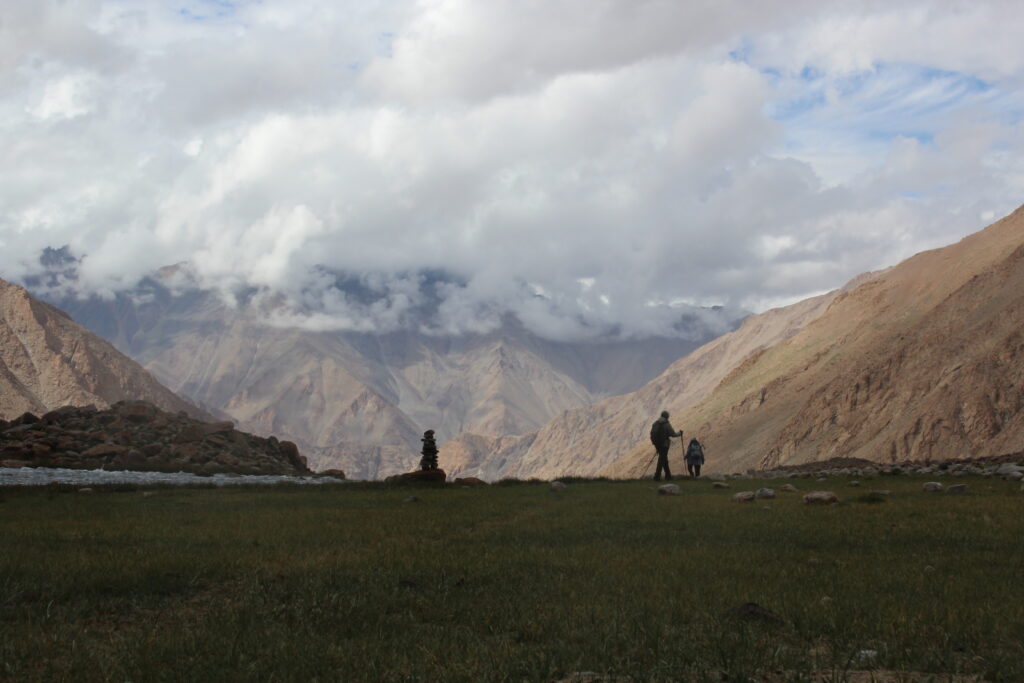
Campsites like Sumzom and Hunder Dok are wild and unspoiled, while the South and North base camps are as rugged and unforgiving as one imagines severe high altitude to be.
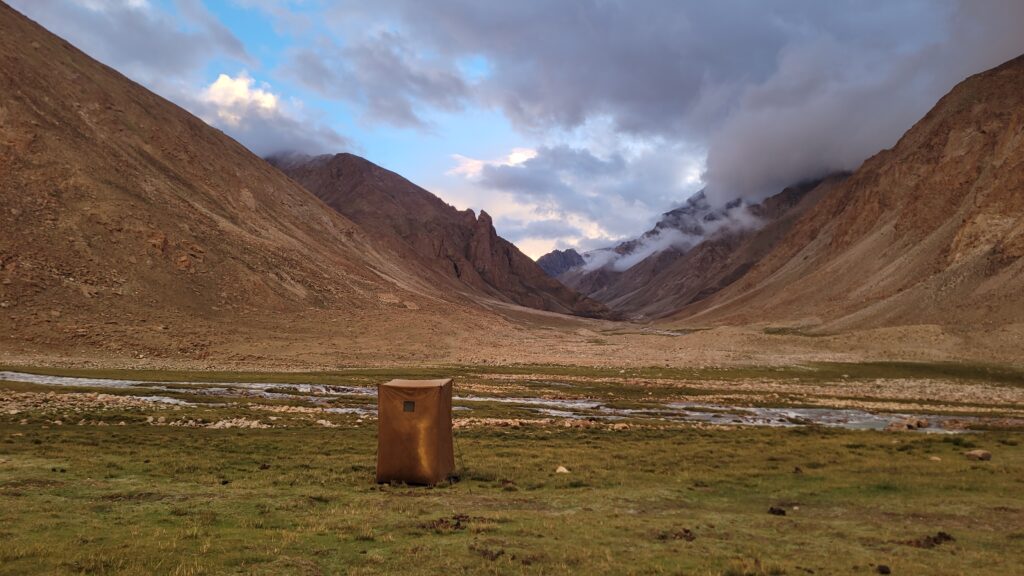
This makes Lasermo La ideal for those who want to escape the crowds and immerse themselves in true Himalayan wilderness. It demands a certain level of self-sufficiency, and the fortitude to brave the elevation but the payoff is wonderful – almost as if you’re rediscovering Ladakh in its rawest form. For many trekkers, this is the ultimate reason to choose Lasermo La over more commercially well-known options.
-
Flora and Fauna Along the Trail
For wildlife enthusiasts or those with a keen interest in ecology, the Lasermo La Trek is an absolute delight. Ladakh may seem barren at first glance, but a closer look reveals a surprising range of flora and fauna adapted to high-altitude life.
On the lower slopes and meadows, you are likely to spot marmots sunning themselves on rocks or darting back into burrows as you approach. Pikas, small relatives of rabbits, scurry around scree slopes with squeaky alarm calls.
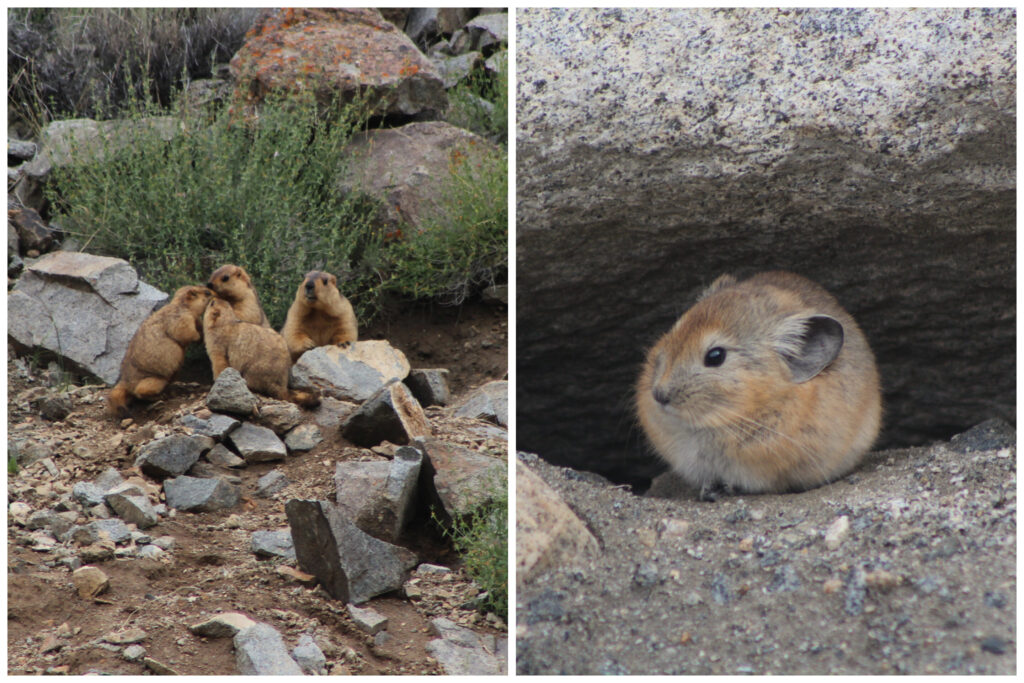
In pastures, you’ll find yaks and dzos grazing lazily, their presence a reminder of how integral they are to local livelihoods.
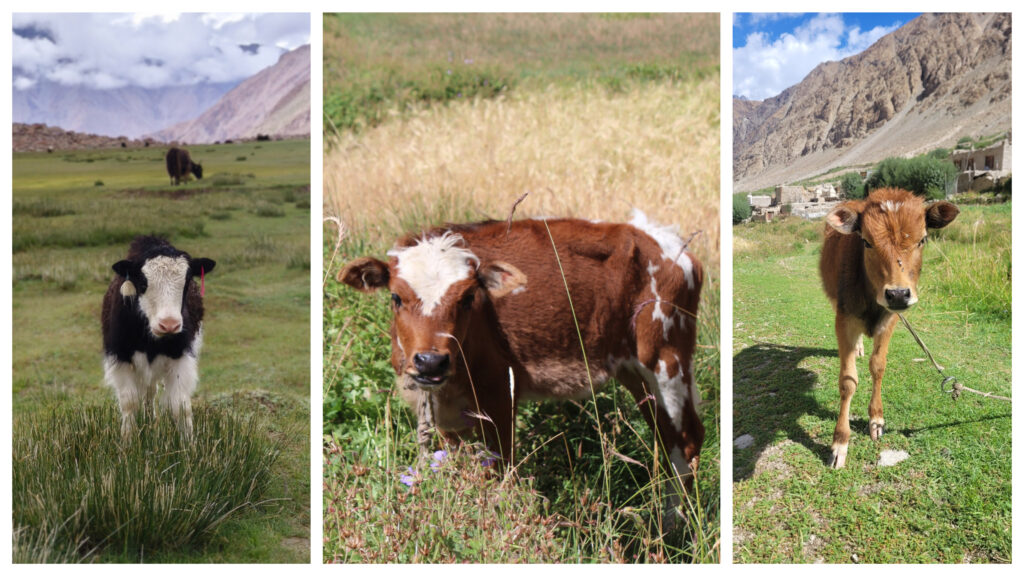
Birdlife includes species like the lammergeier (bearded vulture) soaring high above, golden eagles, and even the occasional snow partridge or choughs. If you’re lucky, you might glimpse the elusive blue sheep (bharal) on the ridges, blending almost perfectly with the rocky terrain.
The vegetation, though sparse, is equally fascinating. Alpine flowers such as edelweiss, wild gentians, and Himalayan poppies paint the meadows in shades of yellow, white, purple and indigo summer, creating bursts of color against the rugged backdrop. On the Nubra side, greener pastures and small cultivated plots add to the sense of abundance.
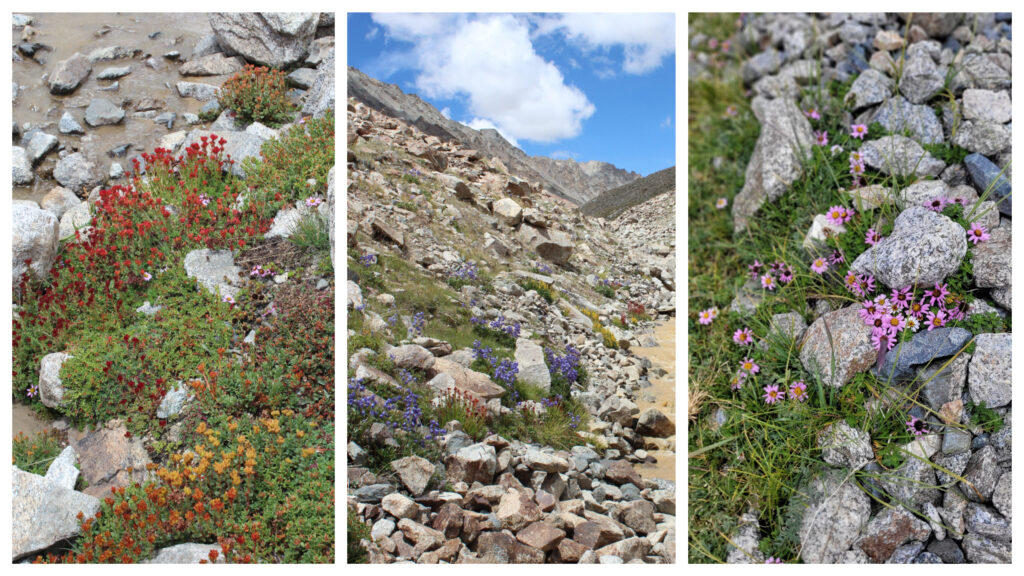
This close connection with wildlife and plant life gives the trek a sense of intimacy with the natural world, reminding trekkers that Ladakh is alive even in its most desolate corners.
-
Nights Under the Galaxy
Finally, no description of the Lasermo La Trek would be complete without mentioning the night skies. Ladakh is known for the opportunities it provides for immaculate stargazing, and the campsites along this trek offer some of the best conditions you will ever experience.
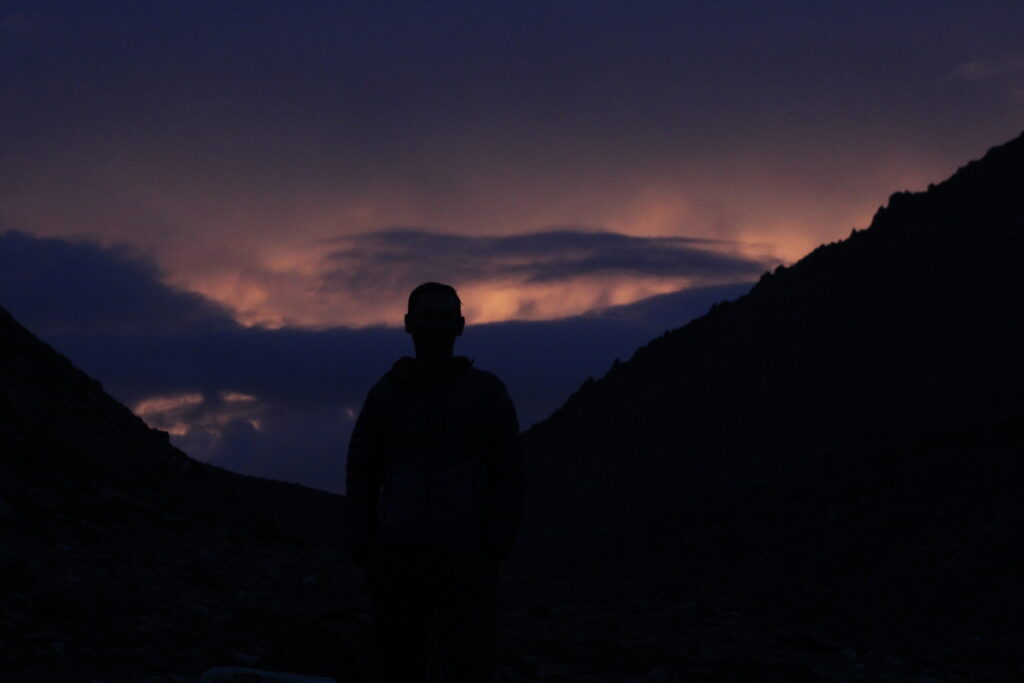
Far from the ambient lights of cities and towns, the sky becomes a canvas of stars so dense it feels like the universe is pouring itself out above you. The Milky Way arches clearly across the sky, with shooting stars streaking past more than occasionally. At higher camps like Sumzom and South Base, where the air is crisp and thin, the clarity is staggering.
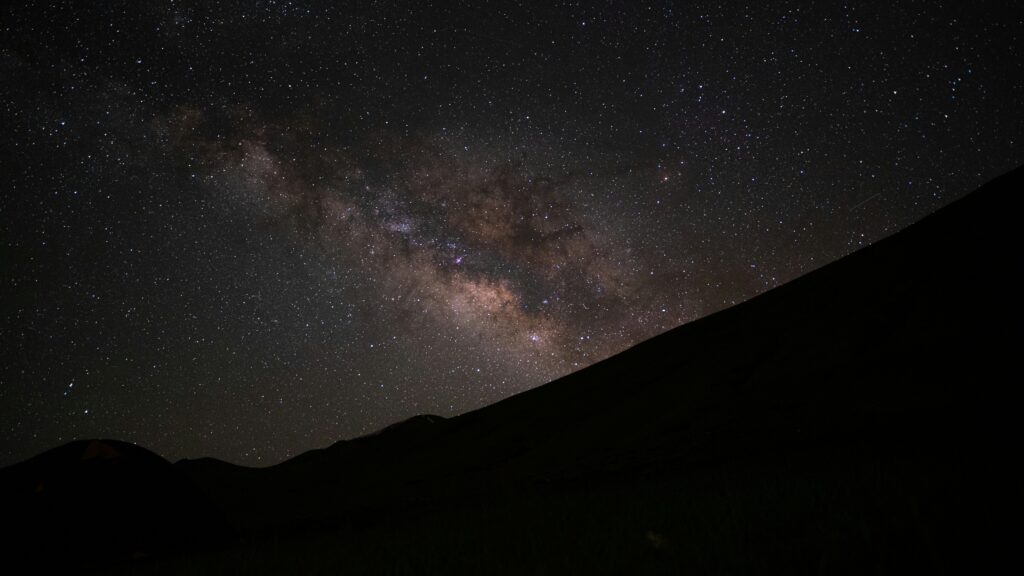
Lying in your tent or stepping outside at midnight, you feel dwarfed by the scale of it all. These nights under the galaxy are as much a part of the trek’s memory as the pass crossing itself. For many trekkers, it is the quiet magic of these moments, and not the physical challenge, that at times lingers longest after returning home.
In a Brief Nutshell – Why Choose Lasermo La?
Simply put, the Lasermo La Trek is more than just another trail in Ladakh.
It is a definitely unique and truly an experience of a lifetime that combines adventure with cultural depth, natural diversity, and soulful solitude amidst rivers and under the stars.
Crossing one of India’s highest passes, camping at unique high-mountain locations like Sumzom and Hunder Dok, or simply staring up at the Milky Way after a long day’s walk—every element of this trek adds a distinct flavor to the surreal experience!
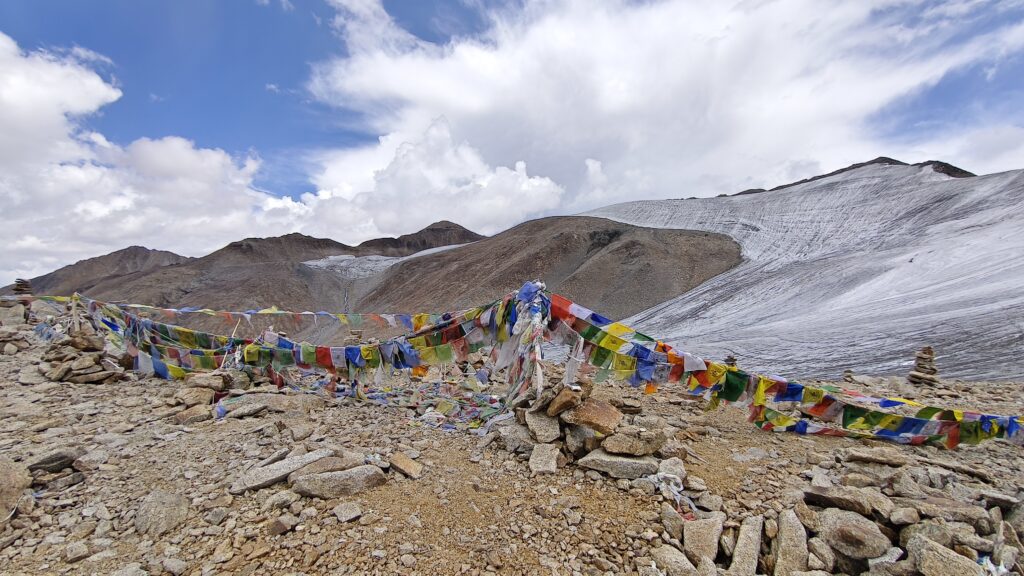
For trekkers seeking something offbeat, rewarding, and unforgettable, Lasermo La is a journey that checks every box. It challenges you, humbles you, and gifts you memories of Ladakh that few others will ever know.
If there is one Ladakh trek that deserves to be called a hidden gem, it is this one.

